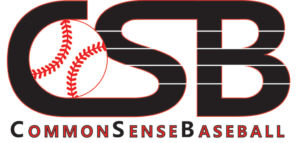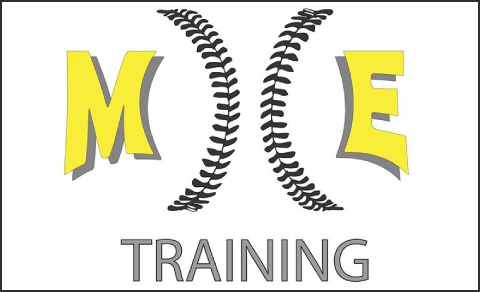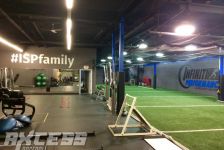Jarad Vollkommer, CSCS
The off-season grind is slowly coming upon us. The summer heat is cooling down, kids are going back to school, and fall practices will start in a couple of weeks.
Now that we transition into the off-season, it’s important to consider some variables.

- You’re probably enjoying the time off from all baseball activity. Give your body and your brain the rest that it needs
- Your arm may be hurting, and it may not be either. BUT, regardless of your situation, I think it would be best to not throw for a while. Obviously, you don’t really have a choice if you are a college player. In the perfect world (most High School kids), you could be taking off at least 2 months from throwing altogether.
- NOW is the time to work on your specific needs. In a general sense, players should be working on attacking mobility concerns, gaining some mass/losing some mass, and getting stronger (in that order).
- ASSESS and EVALUATE where you are in the fitness-fatigue paradigm. Later in this article I will discuss some tests you can use to see where you are at in the offseason.
Hopefully, your offseason is long enough that you can successfully adapt to the stresses that are put on your body in the weight room.

To become a Black Diamond call 631-942-2542
With that being said, I found this really interesting paper the other day and I feel like it needs to be shared with the baseball community. It talks about what 21 Major League Strength and Conditioning Coaches are doing in the off-season (as well as in-season) to get their players bigger, faster, and stronger. Although they are dealing with professional players, the information can be used for any skill level.
For this week’s article, I wanted to discuss the outer layer of physical assessments during the offseason. It’s important to get data on yourself to see your baseline measures, and then it makes tracking progress a lot easier. Just like Mike Reinold says, “If you’re not assessing, you’re guessing”.

Physical Testing and Assessments
All coaches reported of performing some sort of body composition assessment. Rather than looking at height and weight and calling it a day, we get a better idea on things when we dive into the specific percentages of tissues: fat-free mass versus fat mass body fat, or BF).
It’s important to focus on body composition because whether you want to put on some muscle mass or not, you’ll be setting yourself up for success when you give yourself measurements as a baseline.

Ideally, we want to stay within the 10-14% BF range for health and performance reasons as an athlete. However, baseball is an interesting sport because there are still monsters for athletes who obviously do not fall within that BF range. Baseball players come in all shapes and sizes!
Only a handful of coaches reported to test for anaerobic capacity (ability to sustain high levels of effort for long periods of time), muscular strength, agility, power, flexibility, and cardiovascular endurance.
The most common test that was used to assess anaerobic capacity was the 300-yard shuttle, which is used in many other sports as well. If we want anaerobic capacity to be as specific to the game as possible, we must realize that a player is never sprinting for more than 14 seconds at a time. However, it is still a great test for overall athleticism.

The most common test that is used for muscular strength is the 1-repetition maximum (1RM). However, baseball strength and conditioning coaches tend to use the 3-5RM test more often. Grip strength is usually assessed too, which has been correlated to overall muscular strength, and in some cases throwing velocity and swing velocity.
The most common test that was used to assess agility was the 5-10-5 (or pro-agility test), another common test across multiple sports. There were other coaches who specified that they used other cone drills besides the 5-10-5.
The most common test that was used to assess muscular power was the vertical jump, another common test across multiple sports. Again, if we want to be very specific to baseball, we know that power is planar specific. As stated in previous articles, the vertical jump does not correlate that well with throwing velocity (to learn more click here).
In the future, I would hope to see some sort of valid test we can use to assess rotational power.

While enhancing many athletic qualities such as speed, agility, power, and strength, it is also important to have a holistic approach to training. Just because some of the research bashes stretching and cardio, we should not just solely leave it out of our training schemes. We know enough now not to be stupid with the amount of volume we perform.
Many common flexibility tests include the sit and reach (hamstring and lumbar spine), Thomas test (hip flexor and quadriceps), and Seated Trunk Rotation.
Assessing for cardiovascular endurance is still important because the aerobic system has a role in anaerobic development.
Let me rephrase that…

When a player is sprinting at full capacity, his heart rate shoots up enormously. In order for a player’s heart rate to come back down in the shortest amount of time possible (recovery), the aerobic system (cardiovascular function) needs to be developed just as much.
There is some interesting research on heart rate and recovery with baseball pitchers. To learn more about it, click here.
The most common test for assessing speed is the 60-yard dash. Some coaches report using a 20-yard dash, 40-yard dash, and times from home-to-first.
Application
You don’t have to adopt every single test that I just outlined. This is where individuality comes into play.
I would highly recommend taking some sort of body composition assessment in the beginning of the off season. If you want to lose some fat mass, you can align your training to that desired outcome. On the other hand, if you want to start gaining some lean mass, you can align your training to that desired outcome as well.
Here is an outlined, more simplified way (for the most part) to assess your body fat percentage with your current height and weight.
FYI, the 1.55 conversion factor is to account for the overestimation of final body fat percentage.

It is important to train for both aerobic and anaerobic capacity. Being able to display your strength in the least amount of time possible is one of the qualities that is needed for a baseball player. Within that same token, being able to produce a near-max heart rate and then return back to baseline in the last amount of time as possible is also important.
In summary, the offseason should be surrounded with a few overarching themes: moving well, getting your body where it needs to be physically, and getting stronger every day.
In the next article, I will be going over specific training to attack mobility concerns for the baseball player.











